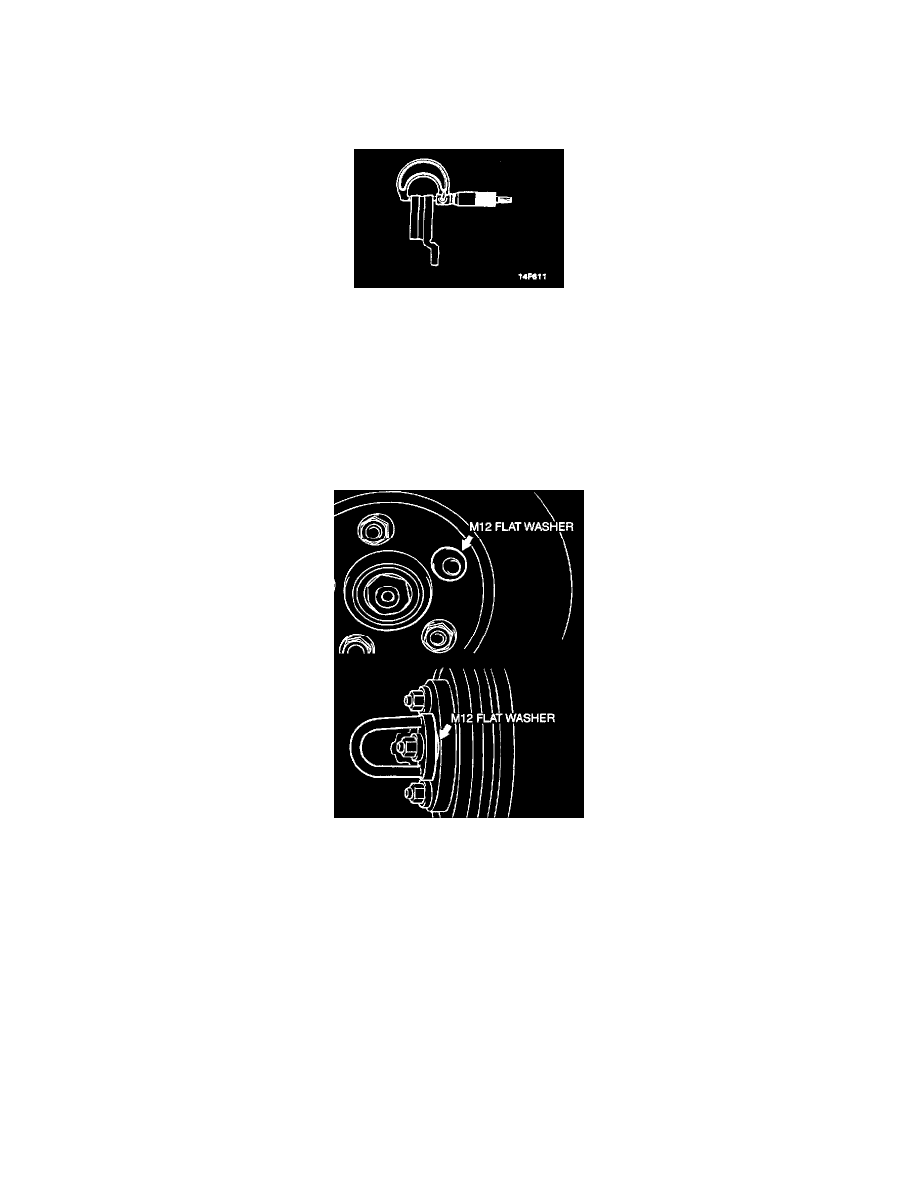Montero Sport V6-3.5L SOHC (2004)

Brake Rotor/Disc: Testing and Inspection
Brake Disc Thickness Check
BRAKE DISC THICKNESS CHECK
<Front>
1. Remove dirt and rust from the brake disc surface.
2. Using a micrometer, measure disc thickness at eight positions, approximately 45 degree angle apart and 10 mm (0.4 inch) in from the outer edge
of the disc.
BRAKE DISC THICKNESS
Standard value: 24.0 mm (0.94 inch)
Minimum limit: 22.4 mm (0.88 inch)
3. Thickness variation (at least 8 positions) should not be more than 0.015 mm (0.0006 inch).
CAUTION:
^
After a new brake disc is installed, always grind the brake disc with on-the-car type brake lathe. If this step is not carried out, the brake disc
run-out exceeds the specified value, resulting in judder.
^
When the on-the-car type lathe is used, first install M12 flat washer on the stud bolt in the brake disc side according to the figure, and then
install the adapter. If the adapter is installed with M12 flat washer not seated, the brake disc rotor may be deformed, resulting in inaccurate
grinding.
^
Grind the brake disc with all wheel nuts diagonally and equally tightened to the specified torque 100 Nm (74 ft. lbs.). When all numbers of
wheel nuts are not used, or the tightening torque is excessive or not equal, the brake disc rotor or drum may be deformed, resulting in judder.
4. If the disc thick is less than 22.4 mm (0.88 inch) thick, replace it with a new one. If thickness variation exceeds the specification, turn rotor with
an on-the-car type brake lathe ("Accuturn-8750" or equivalent). If the calculated final thickness after turning the rotor is less than the standard
value, replace the disc.
<Rear>
